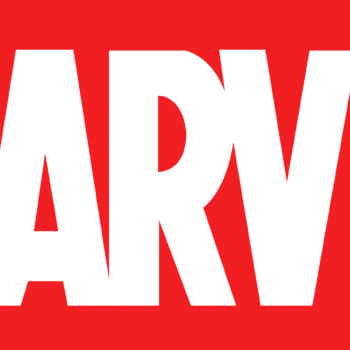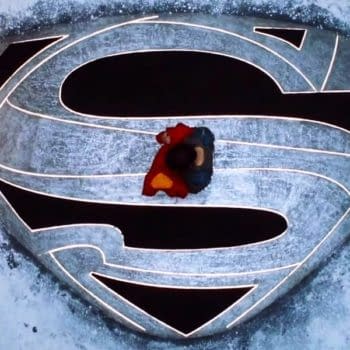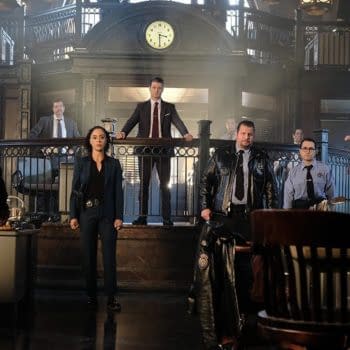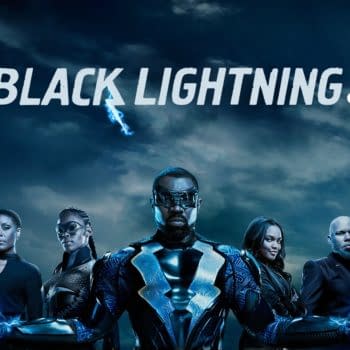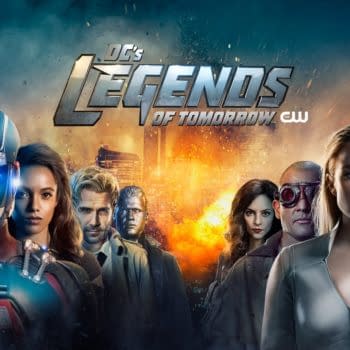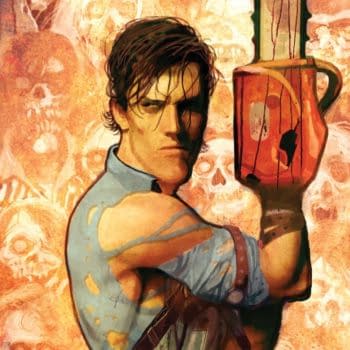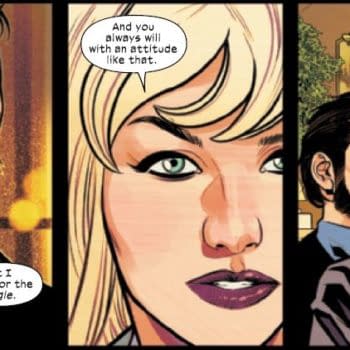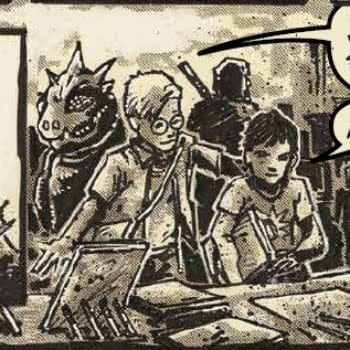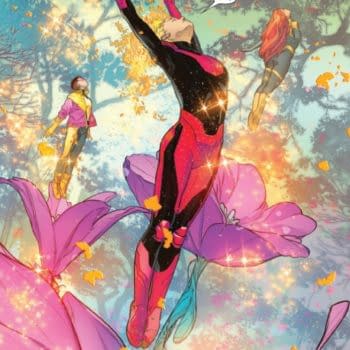Posted in: Comics | Tagged: betty boop, Comics, dynamite, entertainment, Gisèle Lagacé, J. Bone, roger langridge
Roger Langridge Tries To Tap Into The Dream-Logic Of Cartoons
Writer Roger Langridge talks to Byron Brewer about re-establishing and modernizing the classic Fleisher character Betty Boop and what if any censorship he has to put on himself. The cover art in this article are by Langridge and J. Bone.

ROGER LANGRIDGE: I don't pull back that much – sometimes I might think of a bit of dialogue that I'd love to do but which might cross a line, but even that's rare; I've been working in the all-ages milieu for quite a few years now, so I have more or less internalized the boundaries when I work on an all-ages book. (To be honest, even my work for adults is usually readable by kids, although they might be baffled by the silent movie references and my "comedy of despair" approach.) These days, pre-Code Betty looks pretty tame in any case, as most of the risqué content was pretty well masked unless you knew what to look for – though, again, kids might be occasionally baffled by some of the sex and booze metaphors. We don't want to hand it to 'em on a plate; where's the fun in that?
BB: Gigantic bugs is JUST LIKE the kind of menace Betty & crew would contend with in the '30s flicks, and the spider menacing Betty, Koko and Bimbo on YOUR cover to #3 looks like a movie poster from that era. What is it about Betty that brings this genuine affection for the character and what makes her that character from you, Roger, as a writer and as an artist?
RL: The era generally resonates with me for some reason (at least in an aesthetic sense; I don't imagine the Depression was much fun to live through). Artistically, it was such an exciting time: talking pictures had just been invented, animation was getting sophisticated for the first time, newspaper comics were at their artistic peak, jazz music was breaking all the rules, broadcast media in the form of radio was changing the way we consume entertainment. I think the Fleischers' cartoons represent a perfect storm of a bunch of those things, and that, combined with their often highly eccentric and surreal choice of subject matter, straight from the id to your eyeballs, makes for a heady brew indeed! It just works, in a way that things that aren't created in a "calculated" way so often do.
As for how I capture that tone, and Betty specifically: I'm not sure I do, entirely, but I'm giving it my best shot. I write early in the morning as a rule, before I'm entirely awake, so I hope I capture a bit of that dream-logic that characterizes the cartoons. I try to imagine how Betty would behave in the cartoons and have her react to the situations I throw at her in a way that seems consistent with what's established there – being a tough cookie, never giving up, being fiercely loyal to her friends; it's one of the basic tools in a writer's kit, putting yourself in the shoes of your characters. I haven't really analyzed it more closely than that! So far I seem to be getting away with it.
BB: I have not seen #3 yet (obviously), but how fun was it to work with Grampy inventing some kooky contraptions to battle the bugs?
RL: It's one of the great pleasures of working in the comics medium, writing kooky inventors! The first comic I ever drew, when I was six or seven, was about an inventor, heavily inspired by Carl Barks' Gyro Gearloose. And Grampy is such a scatterbrained nut, he's a joy to spend time with as a writer. The more inappropriate and ineffectual his inventions, the better!

RL: It's certainly part of your toolkit when writing comedy. An unreal lurch, or a wildly improbable coincidence, if played right, can really add to the fun, I think. And, again, recorded music was really taking off around the era Betty Boop was being made, and the stories are full of music, so it's a good fit.
BB: Month after month, I am blown away by the renderings of Betty and her friends in this book. From your covers and that of J Bone and the flawless interiors of Gisele Lagace, I sometimes wonder if these are frames from the flicks. Are all the artists involved, like you, fans of Betty Boop?
RL: I don't know about all of them. I think J Bone certainly is, because I gather from following his social media that he's into a lot of movies of that era (and can I say what a pleasure it is to have him involved, too!); I know Gisele did quite a bit of research to get into the character, so if she wasn't a fan before she started I imagine she's turned that corner by now, through sheer immersion.
BB: What's up next issue, Roger, if you can hint at that in a non-spoilery manner?
RL: My cover for the next issue [#4, January 2017] features Betty, Koko and Bimbo up against a movie director, devils with pitchforks and a fiery pit of flame. I think that accurately sets the tone!
For more on the Betty Boop series, click here.



